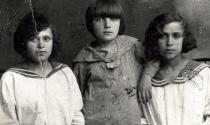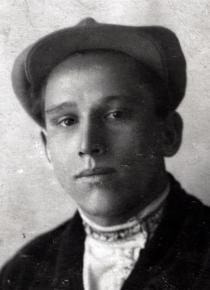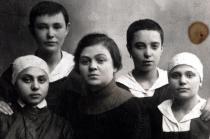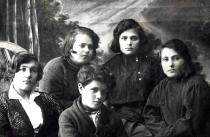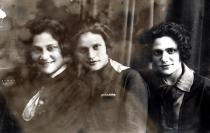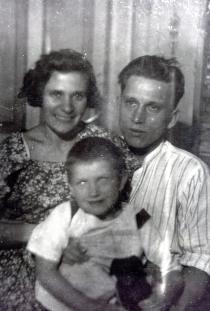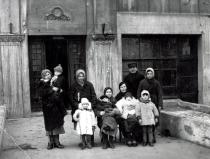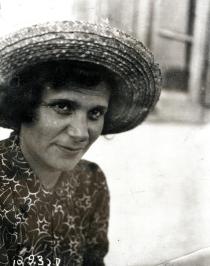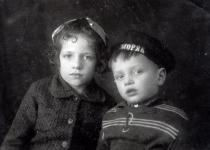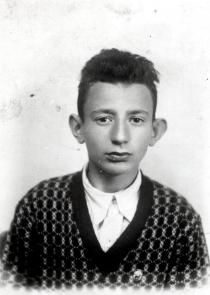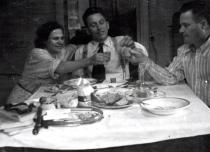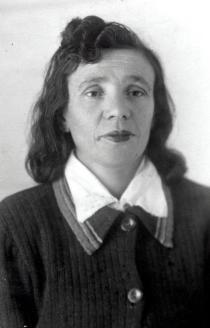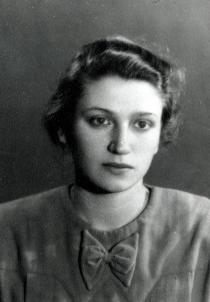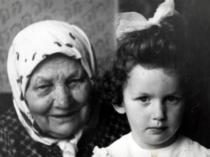The farewell photo. Children from the Jewish children's home, Uman, prior to their departure to Kiev. My mother Buzia Aloets is in the upper row on the right. Photo made in Zvenigorodka in 1925. I have no information about the others on the photo.
My mother Buzia Aloets was born in Mankovka village Cherkassy region in 1909. She was born in the family of a mill worker Mendel Aloets. There were 4 children in Mendel's family. He had two boys from his first marriage and (his 1st wife must have died - I don't know anything about it), and two girls from his second marriage. My grandmother's name was Inga. Their family was well to do. My mother told me that her mother put on a wig, a very beautiful black velvet mantel and a heavy gold chain to go to the synagogue. She was a woman of a striking beauty. And this was the only memory of their peaceful pre-revolution life that my mother had. In 1919 a gang on the horses rode across Mankovka. I don't know exactly whether they were a cavalry or just bandits. Their neighbors managed to grab Inga and the girls and hide them. Tte boys were older and were apprentices in the neighboring villages) and hide them in the shed. Inga was watching what was going on in their yard through a chink in the wall of this shed. She saw her husband killed - he was my grandfather Mendel. Inga went mentally ill.
The year of 1919. The compassionate neighbors took my mother and the girl to the road, turned them in the direction of Uman and told them to go straight on and to make no turns until they reached Uman. They were to find the town's Komsomol committee to seek help there. My 10-year-old mother took Fania, her 7-year-old sister's hand and they headed to Uman. They got the town committee. They could provide shelter during the day only and they told them to find a place stay at night by themselves. The girls were living with a drunkard woman in some basement with brick floors. It was cold and damp. They lived so for some time until they were sent to different Jewish children's homes. Children's homes often moved and children were sent from one home to another and the sisters lost each other. They met in 29 years afterwards, in 1949. My mother didn't say anything about her life in the children's home. She only mentioned once that the children had music classes. When we got a piano at home she recalled a piece and played it. Her fingers recalled it. When she grew old she recalled that they had had knitting classes and she took to knitting. Her fingers remembered. I have no information about their everyday life or system of education, just one terrible detail. After the war two other former inmates of the children's home visited my mother.

